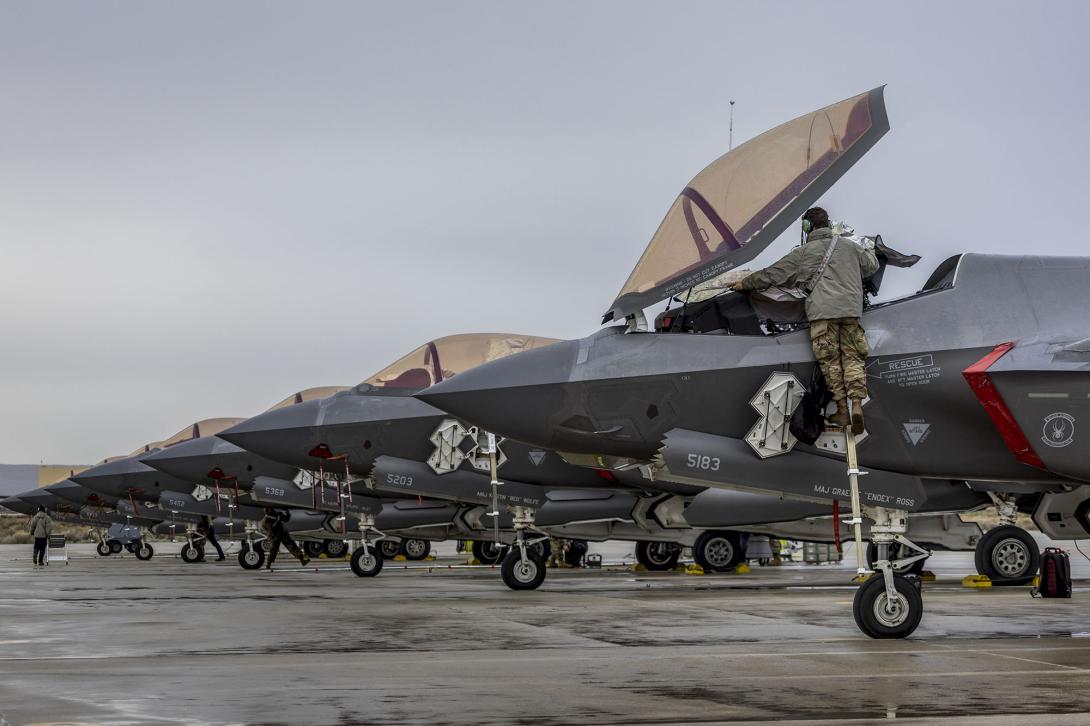Designing the Approach to Standardized Application Programming Interfaces
The Department of the Air Force is taking the necessary steps to standardize application programming interfaces (APIs) across the service. Calibrating this software intermediary that specifies how computers and systems communicate with each other will improve how components and applications interact and share data.
And since the goal of combined joint all-domain command and control (CJADC2)—which is to connect every sensor to shooter in joint force and coalition operations across all domains—rests, at a basic level, on how the military’s computers or weapon systems communicate with each other, standardizing APIs will enable the real-time, authoritative data-sharing that is needed for successful CJADC2, said the Department of the Air Force’s Chief Technology Officer Jay Bonci.
“APIs represent for us an increase in sophistication at the enterprise level around communication and architectural standards,” Bonci explained to SIGNAL Media in an interview. “And it touches zero trust; it touches our data interoperability, our business systems, and software factories. It’s going to change the way that we think about interacting with developers and with the engineers who are doing the integration of our capabilities. Making sure that we have this glue established, working and well supported is the foundation to getting a fully integrated set of capabilities for the future.”
At present, Department of the Air Force systems cannot communicate together on a wide scale and share data in real time. Data-sharing constructs are commonly made ad hoc and without guidance from the department. Bonci’s hope is that the comprehensive API effort will put an end to that practice.
Moreover, while the Air Force has many key data platforms, the data-sharing from these platforms is not as quick as it needs to be for a contested environment. That data could be six or 12 hours or a month old.
Standardized APIs that incorporate some elements of both a data fabric and a data mesh will present a standalone solution to allow Department of the Air Force systems to communicate data in real time. In addition, a standardized API construct will help enable scalability and authoritative data-sharing through governance and oversight and software interoperability.

Bonci announced the effort in November at the AFCEA Alamo Chapter’s ACE annual event in San Antonio. The department gained internal approvals in late January, followed by a public comment period on the proposed set of API reference architectures.
“The goal is to have conversations about what is both best practice and what is commercially supported,” the CTO noted. “There are a number of leading industry ecosystems that have developed and delivered both ‘all-in-one API ecosystems’ but also some products that would help you build your own. We want to make sure that we are appropriately adopting the already-tread path that industry has put out for us.”
The discussion and comment period also involves the joint community as well as coalition nations. “We want to make sure that we’re aligned with the DoD [Department of Defense] and aligned with our allies and partners,” the CTO confirmed. Bonci also will turn to early adopters in the service’s software factories to experiment with and help confirm what “right” looks like for APIs. “The conversations have been great thus far,” he shared. “We’re really pleased with the progress and some of the initial artifacts on it. But the goal is to get industry involved and the broader technical community.”
Based on the feedback, the CTO’s office is rolling out various standardized tools over the next year, including API formats, credentialing, services and procedures.
“To develop an API ecosystem, we know that it is going to take having a set of tools that support a wide variety of end architectures,” Bonci shared. Those tools will apply to applications hosted in the cloud, on-premise or for legacy applications.
The standardization will not be overly prescriptive, Bonci emphasized. He sees promulgating the standard by having a set of robust enterprise services that provide guardrails that secure and define the collaboration between components.
In addition, the construct would have the flexibility to serve consumers as well as developers/publishers. “The end goal is to create a standardized set of APIs that could be put together in a single SDK [software development kit] that is broadly supported by the DAF [Department of the Air Force],” he said. “We want to provide the guardrails to make it easy to participate, regardless of where you fall in the functional ecosystem, like the CPU [computer processing unit] ecosystem, or intelligence or maintenance or human resources. We’re sort of neutral as to the set of participants.”
According to the CTO, most large technology companies—such as Microsoft, Amazon, Google and Tesla—have already addressed streamlining the software interface process, and he asserts that it is now time for the Air Force to tackle this software challenge. Several types of APIs exist—such as Rest API, created two decades ago, or WebSocket API. But they are not standardized, and the Department of the Air Force needs scalable military solutions.
“Our scale and scope is certainly the Air Force, and it is a huge field of systems that we need to pull together,” Bonci said. “But again, it’s only a really small part of the broader DoD. We have to play in this increasingly integrated, increasingly joint, increasingly kind of coalition space, and so, the ability for us even internally to have a clean story and an easy way to interact with Air Force systems makes that integration easier, even if it’s not the same way that other partners would do it.”
By putting up a standardized reference architecture that the Air Force will use, the military can begin to define together a broader API architecture with common principles.
“By having them in the conversation, and to carve out and say, this is an architecture that you, the Navy, or you, the Army, could take and implement, and you can choose your own products, you can choose your own implementation,” Bonci explained. “But if we all came together and looked at an API architecture that had similar core principles and had similar architectural goals, you could start to narrow the deviation between the services and make that integration easier.”






Comments